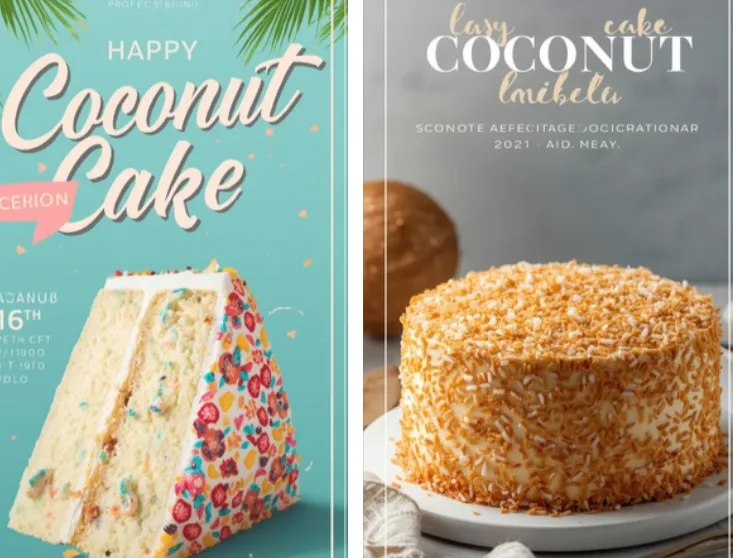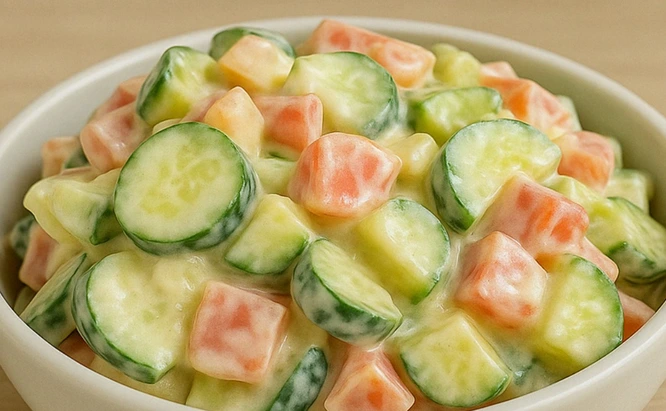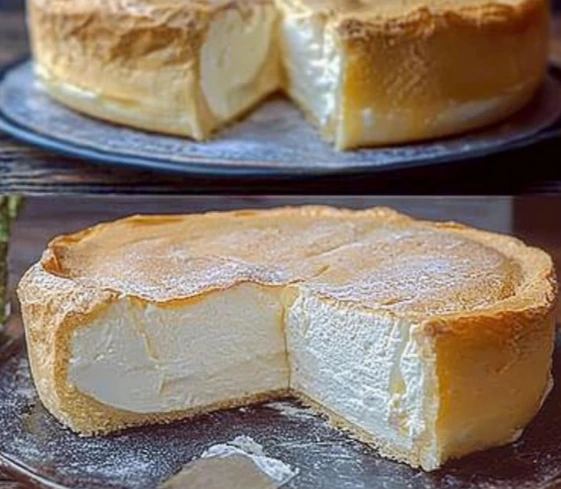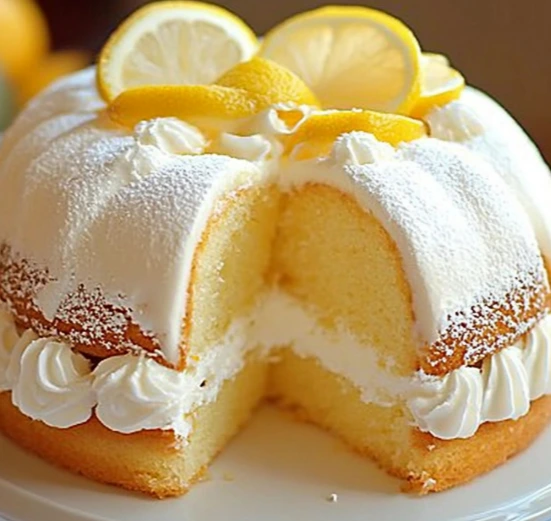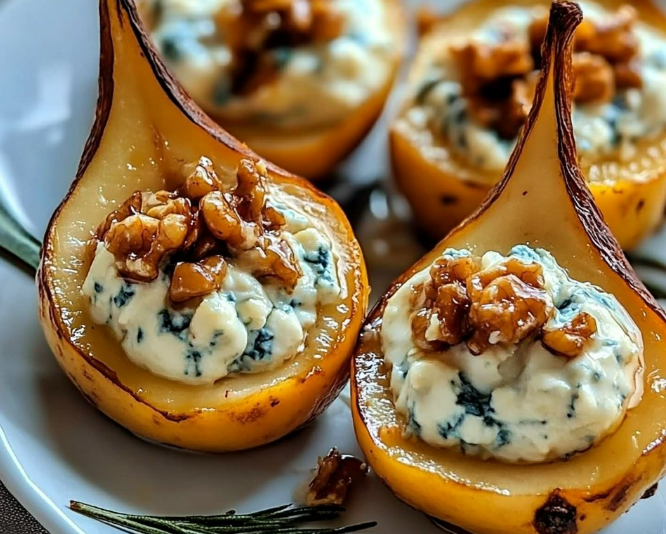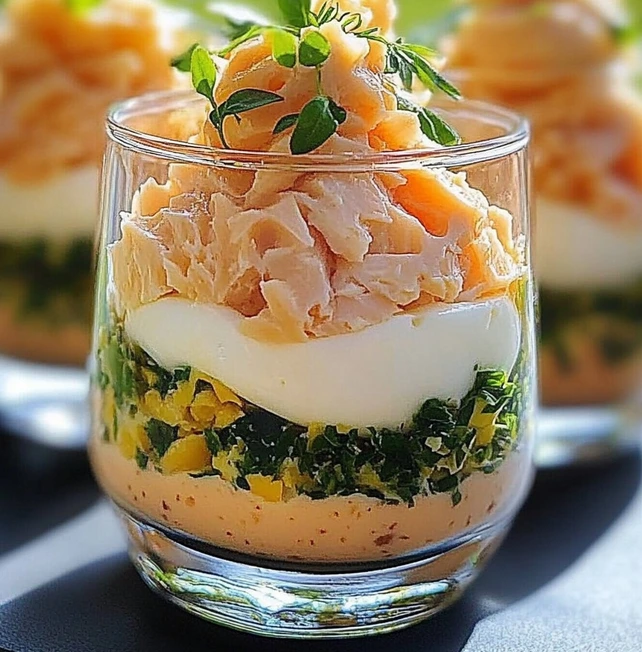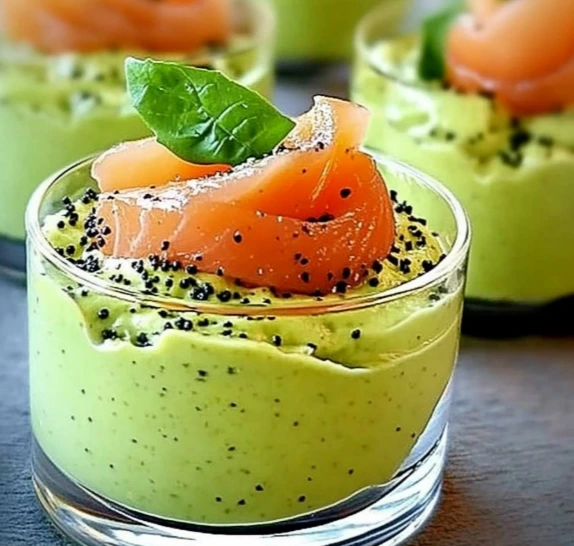Coconut Cake is a dessert that captures the essence of tropical indulgence in every bite. With its soft, fluffy layers, creamy frosting, and delicate coconut flavor, it’s a cake that feels both luxurious and comforting. The combination of sweet coconut milk, shredded coconut, and buttery cake creates a texture that’s moist yet light, while the frosting adds a smooth, creamy finish. Whether served at a summer gathering, a holiday celebration, or a simple family dinner, Coconut Cake is a timeless classic that brings a taste of the tropics to any table.
The Essence of Coconut Cake
Coconut Cake is a Southern classic that has become beloved around the world. Its charm lies in its simplicity — tender vanilla cake infused with coconut flavor, layered with rich frosting, and coated in a snowy blanket of shredded coconut. The flavor is delicate yet distinctive, offering a perfect balance of sweetness and freshness. The texture is what truly sets it apart: moist, airy, and melt-in-your-mouth soft. It’s a cake that feels indulgent but never heavy, making it ideal for any occasion.
Why Choose Coconut Cake?
This cake is the perfect combination of flavor, texture, and elegance. The coconut adds a natural sweetness and tropical aroma that pairs beautifully with the buttery cake and creamy frosting. It’s versatile enough to serve as a show-stopping centerpiece for celebrations or as a simple treat for afternoon tea. The flavor appeals to everyone — light, fragrant, and not overly sweet. Coconut Cake is also highly adaptable, allowing for endless variations with fruit fillings, different frostings, or even a hint of rum for a Caribbean twist.
The Science of Moisture and Flavor
The secret to a perfect Coconut Cake lies in the balance of fat, sugar, and liquid. Coconut milk adds richness and moisture, while butter provides flavor and structure. The sugar helps retain moisture and enhances the coconut’s natural sweetness. The use of egg whites keeps the crumb light and fluffy, while a touch of vanilla and almond extract deepens the flavor. The frosting, often made with cream cheese, butter, or whipped cream, adds a luscious texture that complements the cake’s softness. The result is a dessert that’s moist, flavorful, and perfectly balanced.
Choosing the Best Ingredients
- Flour: Cake flour gives the cake a fine, tender crumb.
- Butter: Unsalted butter adds richness and flavor.
- Sugar: Granulated sugar sweetens and helps create a light texture.
- Egg Whites: Keep the cake airy and soft.
- Coconut Milk: Adds moisture and enhances the coconut flavor.
- Shredded Coconut: Provides texture and visual appeal.
- Vanilla Extract: Adds warmth and depth.
- Almond Extract: Enhances the coconut flavor subtly.
- Baking Powder and Baking Soda: Ensure the cake rises evenly.
- Salt: Balances sweetness and enhances flavor.
- Frosting Ingredients: Cream cheese, butter, powdered sugar, and coconut milk create a smooth, creamy finish.
Step-by-Step Recipe: Coconut Cake
Ingredients
For the cake:
- 2 ½ cups (300 g) cake flour
- 2 ½ teaspoons baking powder
- ½ teaspoon baking soda
- ½ teaspoon salt
- 1 cup (225 g) unsalted butter, softened
- 2 cups (400 g) granulated sugar
- 5 large egg whites, room temperature
- 1 teaspoon pure vanilla extract
- ½ teaspoon almond extract
- 1 cup (240 ml) coconut milk
- ½ cup (120 ml) buttermilk
For the frosting:
- 8 oz (225 g) cream cheese, softened
- ½ cup (115 g) unsalted butter, softened
- 4 cups (480 g) powdered sugar, sifted
- ¼ cup (60 ml) coconut milk
- 1 teaspoon vanilla extract
- 3 cups (240 g) shredded sweetened coconut for coating
Instructions
- Preheat the oven: Set the oven to 350°F (175°C). Grease and line two 9-inch round cake pans with parchment paper.
- Mix dry ingredients: In a medium bowl, whisk together flour, baking powder, baking soda, and salt. Set aside.
- Cream butter and sugar: In a large mixing bowl, beat the butter and sugar together on medium speed for 3–4 minutes until light and fluffy.
- Add egg whites: Beat in the egg whites one at a time, mixing well after each addition.
- Add extracts: Stir in the vanilla and almond extracts.
- Combine wet and dry ingredients: Reduce the mixer speed to low. Add the dry ingredients in three additions, alternating with the coconut milk and buttermilk. Begin and end with the dry ingredients. Mix until just combined.
- Bake: Divide the batter evenly between the prepared pans. Smooth the tops with a spatula. Bake for 25–30 minutes, or until a toothpick inserted in the center comes out clean.
- Cool: Let the cakes cool in the pans for 10 minutes, then transfer to a wire rack to cool completely before frosting.
- Prepare the frosting: In a large bowl, beat the cream cheese and butter together until smooth and creamy. Gradually add the powdered sugar, one cup at a time, beating on low speed. Add coconut milk and vanilla, then beat on high speed for 3–4 minutes until light and fluffy.
- Assemble the cake: Place one cake layer on a serving plate. Spread a generous layer of frosting on top. Add the second layer and frost the top and sides. Press shredded coconut onto the frosting, covering the entire cake.
Tips for Perfect Coconut Cake
- Use room-temperature ingredients: This ensures even mixing and a smooth batter.
- Don’t overmix: Overmixing can make the cake dense.
- Use full-fat coconut milk: It adds richness and moisture.
- Cool completely before frosting: Warm cakes can melt the frosting.
- Toast the coconut: For extra flavor and texture, lightly toast the shredded coconut before using.
- Chill before serving: Chilling helps the flavors meld and makes slicing easier.
Variations and Creative Twists
Coconut Pineapple Cake
Add a layer of crushed pineapple between the cake layers for a tropical twist.
Coconut Lime Cake
Add lime zest and juice to the batter and frosting for a bright, citrusy flavor.
Coconut Almond Cake
Add ½ cup of ground almonds to the batter for a nutty depth.
Coconut Chocolate Cake
Add a layer of chocolate ganache between the cake layers for a decadent variation.
Vegan Coconut Cake
Use plant-based butter, coconut cream, and flax eggs for a dairy-free version.
Coconut Cupcakes
Use the same batter to make cupcakes. Bake for 18–20 minutes and top with coconut frosting.
Serving Suggestions
Coconut Cake pairs beautifully with a variety of accompaniments:
- Fresh Fruit: Pineapple, mango, or berries add freshness.
- Whipped Cream: Lightens the richness of the frosting.
- Ice Cream: Coconut or vanilla ice cream complements the cake perfectly.
- Coffee or Tea: A perfect pairing for afternoon tea or dessert.
- Tropical Garnish: Decorate with toasted coconut flakes or edible flowers.
Nutritional Benefits
While Coconut Cake is a treat, it offers some nutritional value when made with quality ingredients:
- Coconut: Contains healthy fats and minerals like manganese and copper.
- Egg Whites: Provide protein and structure.
- Coconut Milk: Adds healthy fats and a creamy texture.
- Cream Cheese: Adds calcium and protein.
Enjoyed in moderation, it’s a dessert that satisfies both the palate and the soul.
Frequently Asked Questions
Can I make Coconut Cake ahead of time?
Yes, bake the layers a day in advance and store them wrapped in plastic at room temperature. Frost before serving.
Can I freeze the cake?
Yes, wrap unfrosted layers tightly and freeze for up to 2 months. Thaw before frosting.
Can I use desiccated coconut?
Yes, but soak it in coconut milk for 10 minutes to soften before using.
Can I make it dairy-free?
Yes, use plant-based butter and coconut cream for the frosting.
Can I make it gluten-free?
Yes, use a gluten-free flour blend designed for baking.
How do I store leftovers?
Store covered in the refrigerator for up to 5 days. Bring to room temperature before serving.
Hosting with Coconut Cake
This cake is perfect for entertaining because it’s elegant, flavorful, and visually stunning. Serve it as the centerpiece of a dessert table, decorated with toasted coconut, tropical fruit, or white chocolate curls. For weddings or birthdays, keep it simple with smooth frosting and delicate piping. For summer gatherings, pair it with fresh fruit and chilled drinks. It’s a cake that fits every occasion, from casual picnics to formal celebrations.
Creative Additions
- Add rum or coconut liqueur for a boozy twist.
- Sprinkle white chocolate shavings for elegance.
- Add passion fruit pulp for tropical flair.
- Decorate with edible flowers for a fresh look.
- Use coconut flakes of different sizes for texture.
Nutritional Information (per slice)
- Calories: 480–520
- Protein: 6 g
- Fat: 28 g
- Carbohydrates: 55 g
- Fiber: 2 g
- Sodium: 300 mg
Perfect Pairings
- Wine: A sweet Riesling or Moscato complements the tropical flavors.
- Coffee: A light roast or cappuccino balances the sweetness.
- Tea: Jasmine or coconut tea enhances the aroma.
The Appeal of Coconut Cake
What makes Coconut Cake so irresistible is its perfect harmony of flavors and textures. The moist, fluffy crumb contrasts beautifully with the creamy frosting and delicate coconut coating. It’s a cake that feels indulgent yet refreshing, simple yet sophisticated. Its versatility makes it suitable for any occasion — from a cozy family dinner to a grand celebration. The combination of coconut milk, butter, and cream cheese creates a flavor profile that’s comforting, tropical, and timeless.
The Art of Baking Coconut Cake
Baking a perfect Coconut Cake is about precision and care. The key is to achieve the right texture — moist but not heavy, sweet but not cloying. Using fresh ingredients, proper mixing, and careful baking ensures a cake that’s both beautiful and delicious. The frosting, when whipped to perfection, adds the final touch of luxury. Once mastered, this recipe becomes a go-to for any baker, a symbol of warmth and craftsmanship.
Conclusion
Coconut Cake is more than just dessert — it’s a celebration of flavor, texture, and tradition. With its moist crumb, creamy frosting, and tropical aroma, it delivers everything one could want in a cake. Whether served at a family gathering, a holiday feast, or a summer party, it brings warmth and joy to every table. The combination of simple ingredients, careful technique, and timeless flavor transforms this classic recipe into something truly extraordinary. With the tips, variations, and techniques shared in this guide, you can confidently create a Coconut Cake that’s moist, flavorful, and unforgettable — a timeless masterpiece that proves that true indulgence can be both simple and sublime.

